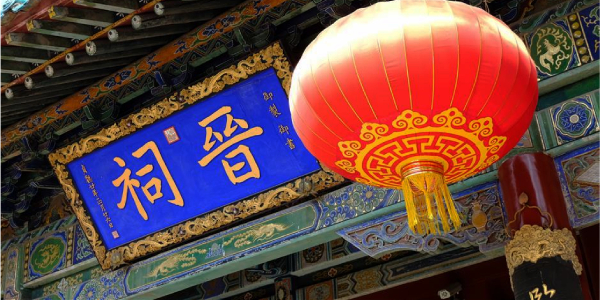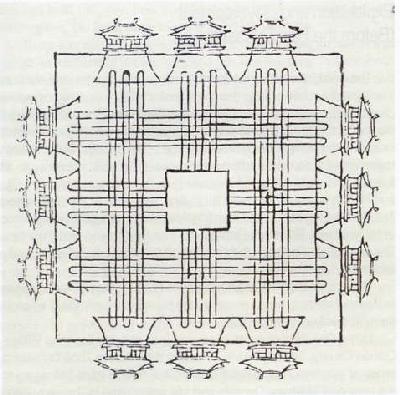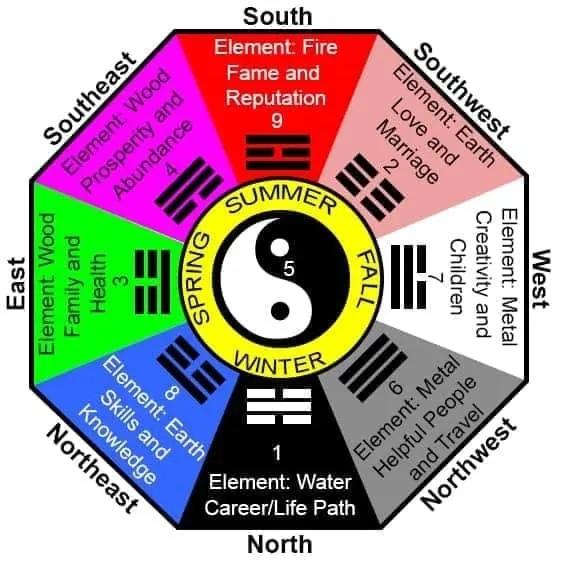Exploring ancient China one roof at a time: Zhou Dynasty

By Emma Peterson.
From 1046 B.C. to today, energy has been a key consideration when designing roofs and buildings.
大家好! Hello everyone! We’re back with another exploration of ancient Chinese roofing! This time around, we’re visiting 周朝 (Zhōu cháo), which is known in English as the Zhou Dynasty. This dynasty ruled ancient China for around eight centuries, from roughly 1046 B.C. to 256 B.C. This was a key time in China’s history, with the development of things like large-scale irrigation projects, horseback riding and 筷子 (Kuàizi or chopsticks). This was also the time of influential cultural developments, with the schools of Confucianism, Daoism and legalism developed during this dynasty.
 For the architecture of the time, the Zhou Dynasty saw the use of traditional things, like the Chinese 斗拱 (dǒugǒngs) brackets. There is also evidence of new developments for the time, like city planning in the era (specifically we see it referenced in the 考工記 (Kǎogōngjì) which is a book on the inspection of engineering work)! Some of the developments of this period are still influential today, such as the courtyard style building complexes and the importance of 風水 (Fēngshuǐ) or feng-shui.
For the architecture of the time, the Zhou Dynasty saw the use of traditional things, like the Chinese 斗拱 (dǒugǒngs) brackets. There is also evidence of new developments for the time, like city planning in the era (specifically we see it referenced in the 考工記 (Kǎogōngjì) which is a book on the inspection of engineering work)! Some of the developments of this period are still influential today, such as the courtyard style building complexes and the importance of 風水 (Fēngshuǐ) or feng-shui.
At its core fēngshuǐ is about the flow of 氣 (Qì), sometimes written as chi. Qì is the life force that flows through everything, including architecture. If properly designed, buildings can promote smooth and balanced flow of qì, which in turn helps occupants live healthy and prosperous lives. When it comes to working with fēngshuǐ, you work with five elements — wood, fire, earth, metal and water. Each element corresponds with specific shapes, colors and materials which is how they contribute to the fēngshuǐ of the building. If one is used too frequently or not enough, it will throw off the balance of the building. Roof design is a key part of the fēngshuǐ of a building. It is considered the protective shield over the entire building, both physically and philosophically.
Roof shape
The shape of the roof is a key determinant of the fēngshuǐ of a roof. In general, sloped roofs are seen as better than flat roofs as the former encourages qì movement rather than the stagnation of the latter. However, some flat roofs can be designed in ways to keep qì moving, a great example is the use of green roofing, as the plants are considered qì enhancing.
 Roof color
Roof color
When it comes to building a roof with fēngshuǐ in mind, selecting a color is key, as different colors are seen as attracting different energies. For example, a green roof will attract growth and renewal, mirroring the wood element, while a red roof, which is symbolic of the fire element, can attract fame. However, it is important to remember that fēngshuǐ is not about pushing one element above the others. Rather, it is to balance the elements with your home’s interior and the surrounding environment. This is where referencing the the 八卦 (Bāguà), in English the bagua, is helpful. The bāguà is a diagram that you can use to organize the elements and your life aspects (such as career, love and relationships, wealth and fame) into a balance.
Even in the context of modern technology and design, the fēngshuǐ principles of the Zhou Dynasty can still be applied. Some experts suggest that accessories like solar panels carry the fire element (symbolizing energy and transformation), and rainwater collectors promote the water element (representing abundance). Both of these are great examples of how the traditional Zhou Dynasty understanding of balance and positive qì aligns with the popularity and emphasis in the modern construction world on creating more sustainable and energy-efficient homes.
謝謝大家跟我們一起旅遊到中國!Thank you all for visiting China with us! If you’re interested in exploring the roofs of the Liao Dynasty (遼朝 - liáo cháo), check out this other article!
Original photo sources (in order of appearance): Shanghai Daily, ChinaCulture.org and the International Feng Shui Guild
Stay up to date with the latest industry news when you sign up for the Coffee Shop eNews.
About Emma
Emma Peterson is a writer at The Coffee Shops and AskARoofer™. Raised in the dreary and fantastical Pacific Northwest, she graduated in 2024 from Pacific University in Oregon with a degree in creative writing and minors in graphic design and Chinese language. Between overthinking everything a little bit, including this bio, she enjoys watching movies with friends, attending concerts and trying to cook new recipes.




















Comments
Leave a Reply
Have an account? Login to leave a comment!
Sign In